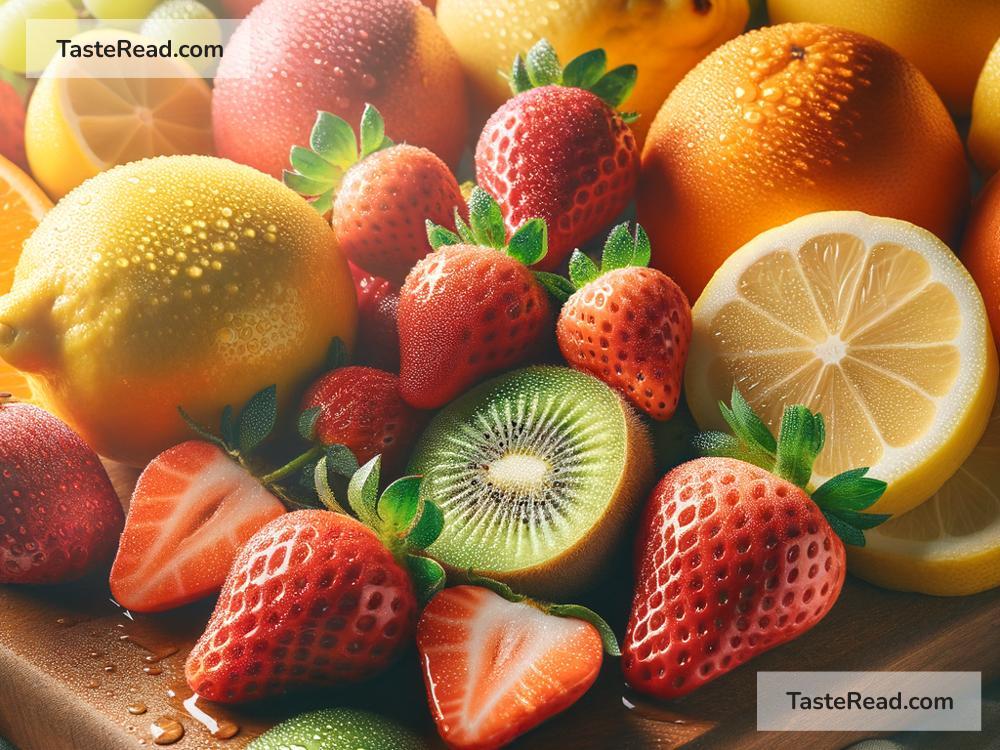The Chemistry Behind Fruit Acidity: Understanding What Makes Fruits Tart
Have you ever bitten into a juicy lemon or a crisp apple and noticed the tangy, sour taste? That distinct sharpness is caused by the natural acids in fruits. These acids are a primary contributor to fruit flavor, playing an important role not just in taste but also in their growth, preservation, and nutritional value. Let’s dive into the fascinating chemistry behind fruit acidity and explore what makes your favorite fruits sour.
What Is Acidity in Fruits?
Acidity refers to how sour or tart a fruit tastes, and this sensation comes from naturally occurring acids in the fruit’s tissues. Acids contain hydrogen ions that can be released when dissolved in water, creating that tangy taste we associate with citrus fruits and other sour treats. The degree of acidity in a fruit is determined by its pH level.
The pH scale measures whether a substance is acidic (below 7), neutral (around 7), or basic/alkaline (above 7). Fruits with a lower pH, such as lemons (pH 2-3), are more acidic and sour, while those with higher pH levels, like bananas (pH 4.5-5), taste milder.
Major Acids Found in Fruits
Several types of acids contribute to the flavor profile of fruits. Let’s take a look at the most common ones:
-
Citric Acid
Citric acid is the superstar of fruit acidity and is found in high concentrations in citrus fruits like lemons, limes, oranges, and grapefruits. It is responsible for their signature tart and refreshing flavor. Citric acid also acts as a natural preservative, helping fruits stay fresh for longer. -
Malic Acid
Malic acid gives apples, cherries, and peaches their crisp, sharp bite. It is also present in smaller amounts in berries. Malic acid is less sour than citric acid, making fruits like apples have a pleasantly tangy flavor without overwhelming tartness. -
Tartaric Acid
Grapes owe their distinctive sourness to tartaric acid. It’s also a key component in wine production, as tartaric acid helps balance the sweet and sour flavors in the winemaking process. Additionally, you might have seen “cream of tartar” in baking recipes—that’s derived from tartaric acid. -
Ascorbic Acid (Vitamin C)
While ascorbic acid’s primary role is as a nutrient, it contributes slight acidity to fruits like oranges and strawberries. Vitamin C is also an antioxidant, promoting overall health while adding a subtle tang to fruit flavors. -
Oxalic Acid
Found in small amounts in fruits like pineapples and rhubarb, oxalic acid is known for its strong sourness. However, it’s usually present in lower concentrations compared to other acids.
Why Are Fruits Acidic?
Acidity serves several important functions in fruits. First, it helps protect the fruit from bacteria and other pathogens that might spoil it. Acidic fruits create a hostile environment for microorganisms, which is why citric acid is often used as a preservative in foods.
Second, acidity plays a role in fruit ripening. As a fruit matures, its sugar content increases, balancing out the acidic compounds and making it taste sweeter. For example, green apples are typically more sour than ripe, red apples because their natural sugars have had more time to develop.
Lastly, acidity attracts animals, insects, and humans to the fruit. The sharp tang often signals the presence of vitamins like vitamin C, which are important for health. By eating the fruit, animals help disperse the seeds, ensuring the plant can grow and reproduce. So in some ways, acidity acts as a marketing tool for the fruit!
Sweet vs. Sour: Balancing Acids with Sugar
The balance between sweetness and sourness plays a big part in how fruits taste. As fruits ripen, their acidity decreases as sugars accumulate, giving them a sweeter taste. For example, lemons remain sour because they contain high levels of citric acid and relatively low sugar content. On the other hand, fruits like mangoes or melons have lower acidity and higher sugar content, making them taste sweet rather than tart.
This balance doesn’t just affect flavor; it also influences how we use fruits. High-acid fruits like lemons and limes are used for tangy drinks, dressings, and marinades, while sweet fruits like bananas and peaches are better suited for desserts.
Acidity and Health
Fruit acidity isn’t just important for flavor—it also provides health benefits. Many acidic fruits, such as oranges and strawberries, are rich in vitamin C, an essential nutrient for immune function, skin health, and wound healing. Acids like malic and citric acid can also help improve digestion and provide an energy boost.
However, highly acidic fruits may cause discomfort for people with acid reflux or sensitive stomachs. If you’re prone to these issues, you might prefer less acidic fruits, like bananas or melons, which are gentler on the stomach.
Conclusion
The chemistry behind fruit acidity is a remarkable blend of science and nature. From citric acid’s zing to malic acid’s crispness, these natural compounds shape the flavors and health benefits of the fruits we love. Acidity not only adds tangy goodness but also plays a critical role in the fruit’s growth, preservation, and nutrition.
So whether you enjoy a sour lemon or a sweet mango, you’re tasting the intricate balance of acids and sugars created by nature herself. Next time you bite into a fruit, take a moment to appreciate the chemistry at work—it’s truly delicious science!


